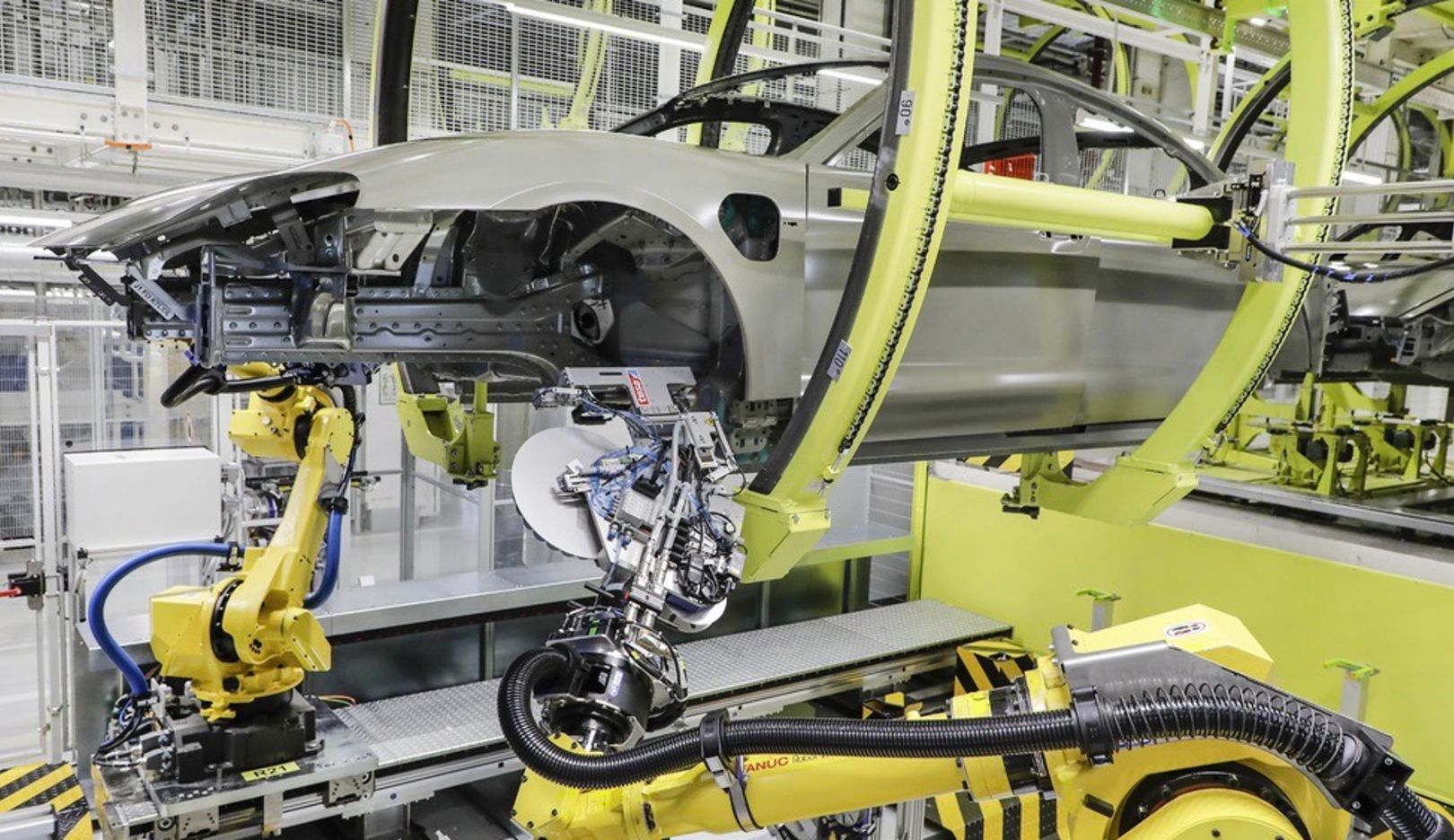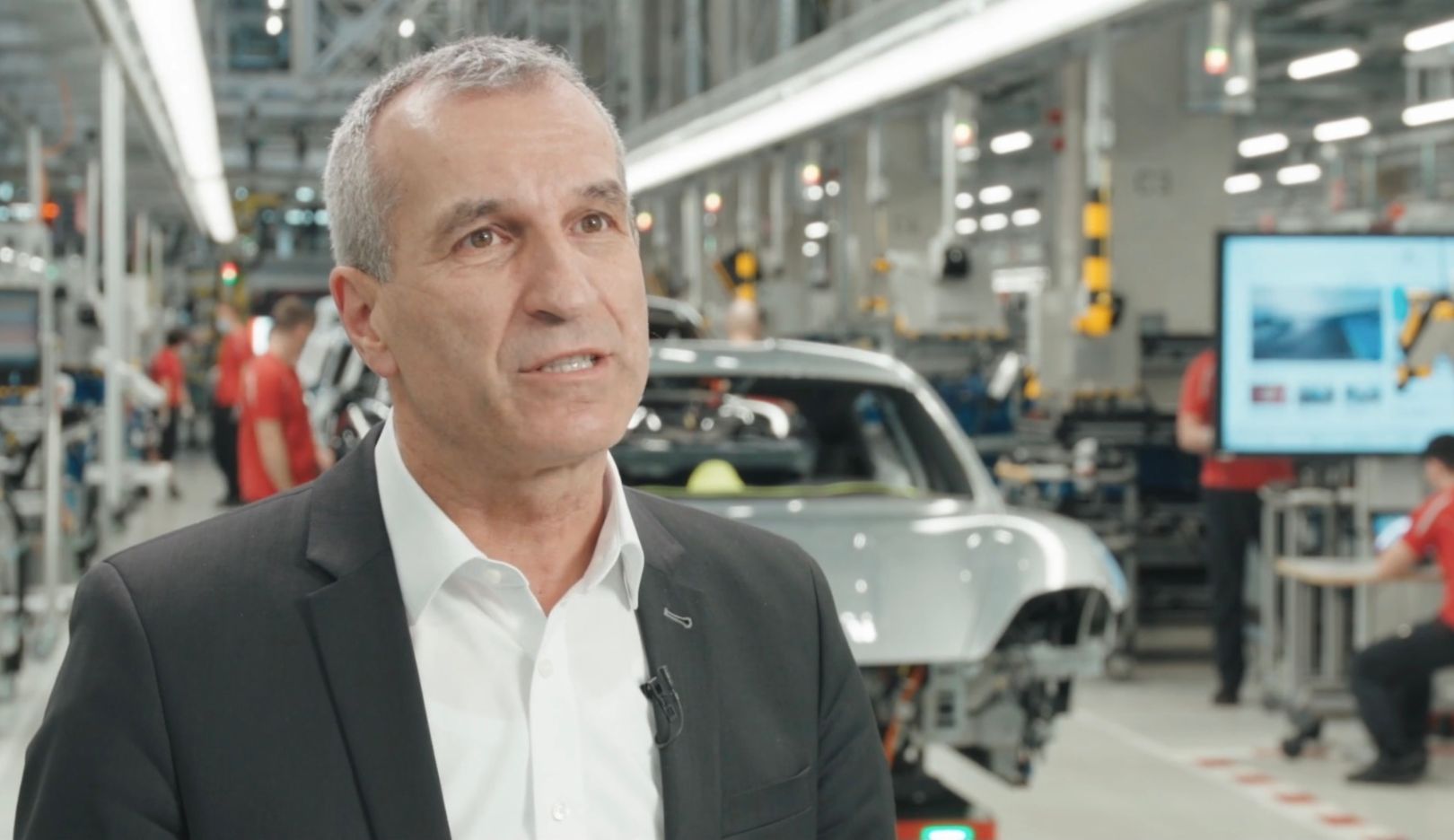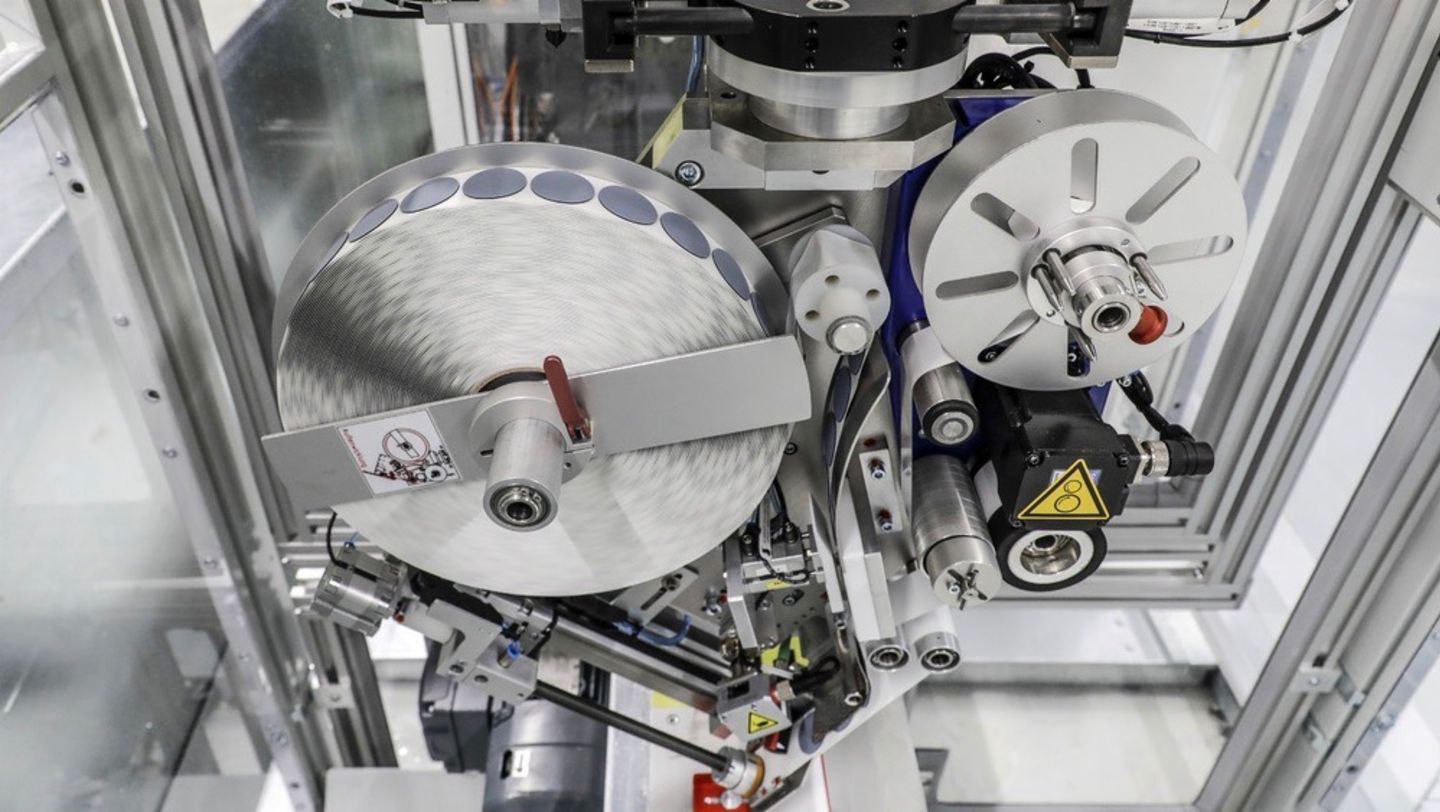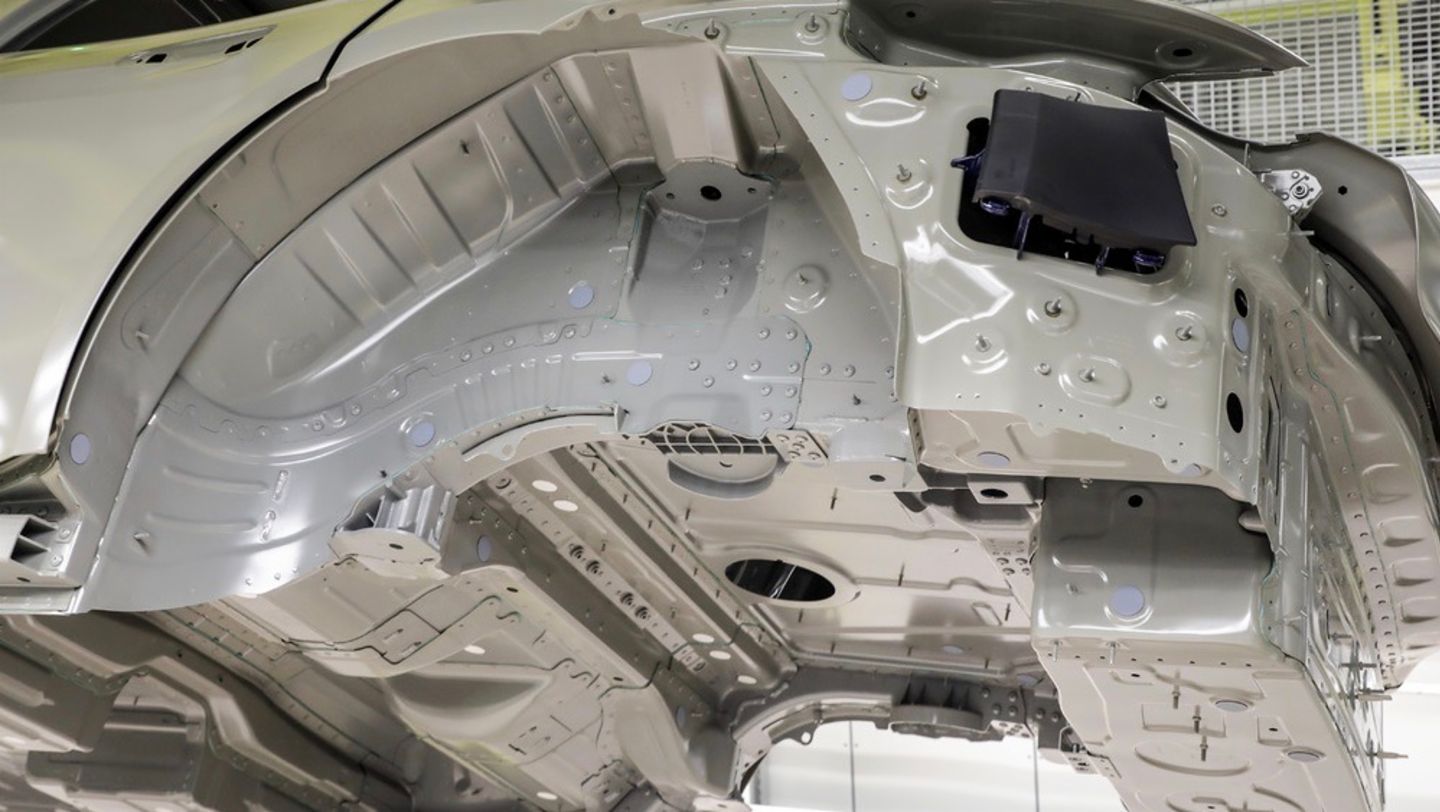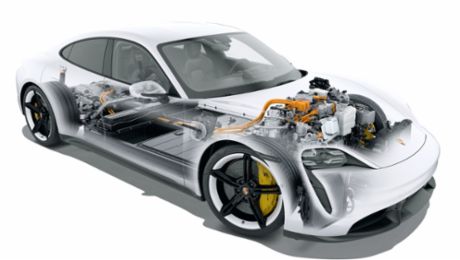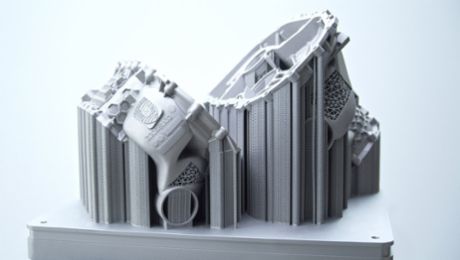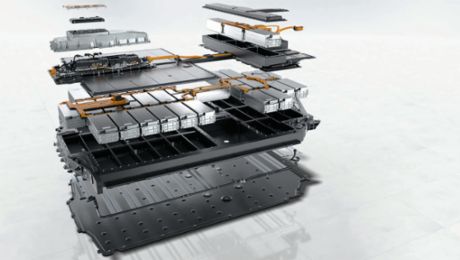Seven kilograms is not actually that heavy; any healthy adult can lift this weight easily. However, when you have to move a seven-kilogram weight 3,600 times per working day using just your thumb, it becomes strenuous. This strain has now been largely eliminated in the production of the Porsche Taycan at the company's headquarters in Zuffenhausen. An innovation has been adopted in the paint shop that relieves considerable strain on Porsche employees while also increasing quality and productivity. The new system uses patches instead of plugs to seal holes in the car body.
Innovative adhesive technology on the Porsche Taycan
No customer ever sees these holes, yet they are immensely important for the durability of each and every vehicle. The anticorrosive coating flows through the deliberately constructed holes into the body cavities in the paint shop. However, following this process step they must be sealed so that they are watertight, as otherwise pockets of rust may develop. The standard technical solution for this problem is to insert precisely fitting plastic plugs – except on the Porsche Taycan. The all-electric sports car is the first car in the world to use an innovative adhesive technology: 106 out of 143 holes in the Taycan body are now initially sealed with sealing patches in this automatic, quick and reliable process. The firm Tesa SE is the technology partner behind the innovation.
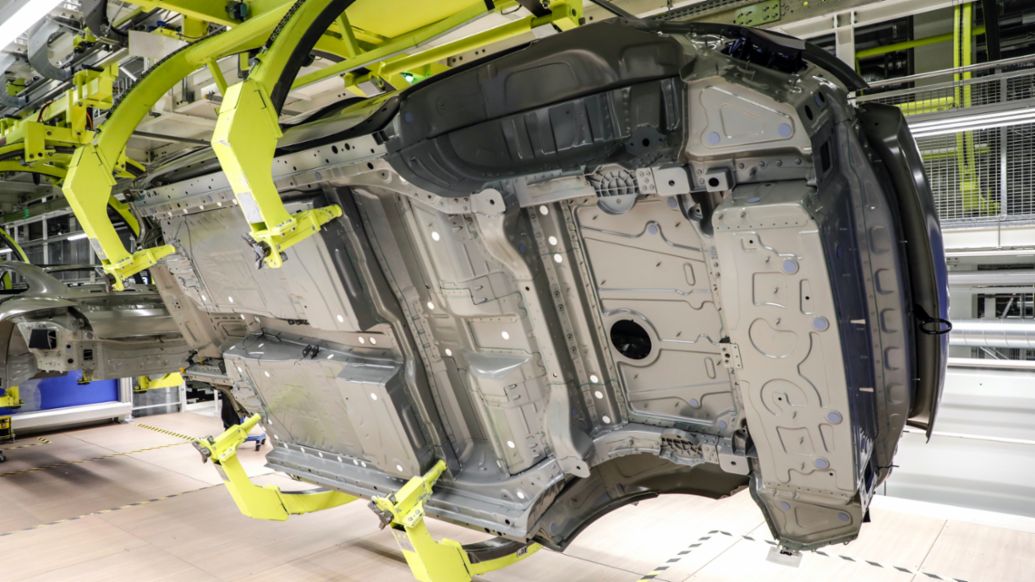
“We mustn’t confuse our adhesive solution with Tesa tape, which everyone knows from their office supplies,” explains Dirk Paffe, who is responsible for the implementation of innovations as Head of Planning for Paint Shop Processes. “Once the special Tesa sealing patches have been applied to a clean surface, they can only be detached again with a great deal of effort. They provide a durable solution that can also withstand the stresses caused by the motion of the vehicle, and last longer than the lifetime of the vehicle.”
Reduced strain on employees
The sealing patches offer additional advantages beyond their core function. These include first and foremost the reduced strain on employees: previously, each employee would have to push up to 3,600 plugs into the holes per shift, which required a thumb pressure of 70 newtons every time – in other words, the exact force required to move a weight of around seven kilograms.
Complexity is also reduced, since all four hole types, with diameters of up to 20 millimetres, can be covered with one standard patch size with a diameter of 33 millimetres. The sealing patches overlap the edges of the holes by a minimum of 6.5 millimetres as standard, though adhesion is guaranteed from an overlap of just two millimetres – this has been shown through extensive testing. Moreover, with a thickness of just one millimetre, the patches barely protrude at all, whereas the plugs extend up to six millimetres outwards from the body. An additional benefit is that the patches are applied using a special robot, which eliminates errors during sealing. The robot looks a bit like a larger version of the type of price gun that you might see at the supermarket.
Automation as the key feature
“The key feature of the solution is not just the sealing patch itself,” says Dirk Paffe, “but the automation of the process. We can apply the sealing patches in large quantities and at high speed with absolute precision using a robot.” This process step now takes three minutes, whereas it used to take employees more than seven minutes.
The idea of replacing plugs with patches emerged at a Tesa Techday in Weissach at the end of 2018. Suppliers regularly present new technical solutions to Porsche, and the idea of developing an automated process for applying sealing patches has made its way into Porsche’s day-to-day operations. By July 2020, most of the plugs in the Taycan paint shop had been eliminated. The Tesa robot works reliably and accurately in all three shifts. By February 2021, the remaining plugs had also been replaced with sealing patches. These are applied manually, which also means relieving a considerable amount strain for employees. The paint shop at the Leipzig plant will also make the switch by summer 2021.
Innovation as a driver for commercial success
“Innovation has always been the driver of our commercial success,” says Albrecht Reimold, Member of the Executive Board responsible for Production and Logistics at Porsche AG. “New innovations have to be mastered. This requires courage and creative freedom. Management's task is to ensure that this atmosphere is fostered in the day-to-day operations of the company.”
The introduction of the new adhesive technology will also lead to an overall cost reduction, thereby meeting a key requirement of Porsche Innovation Management: not only must ideas that are funded to become innovations be unique and create a benefit for the customer, they must also add value to the company.
In this respect, too, seven kilograms is a heavy weight.
Porsche Innovation Management
A key criterion for good ideas at Porsche is the company’s future viability. With that objective, Porsche Innovation Management was set up in 2016. The agile project team actively seeks out new developments, provides funding for them, and puts them to the test internally at an early stage. This goes far beyond the transfer of knowledge from racing to series production. Driving innovation is a principle that is closely tied to Porsche’s Strategy 2030, and is seen as a cross-cutting issue: across all departments and subsidiaries in Germany and abroad. In addition to topics relating to production and development, Innovation Management also deals with major cutting-edge issues: the transition to electric mobility, the spectrum of sustainable mobility solutions between exclusivity and performance, and the impact of digitalisation on companies, customers and products. An idea that has the potential to become an innovation at Porsche must in principle meet three criteria: it must be original and unique, it must benefit the customer, and it must add real value to the company. Funding is provided for 80 to 100 projects per year, with around 70 per cent of these ultimately reaching the development phase.
